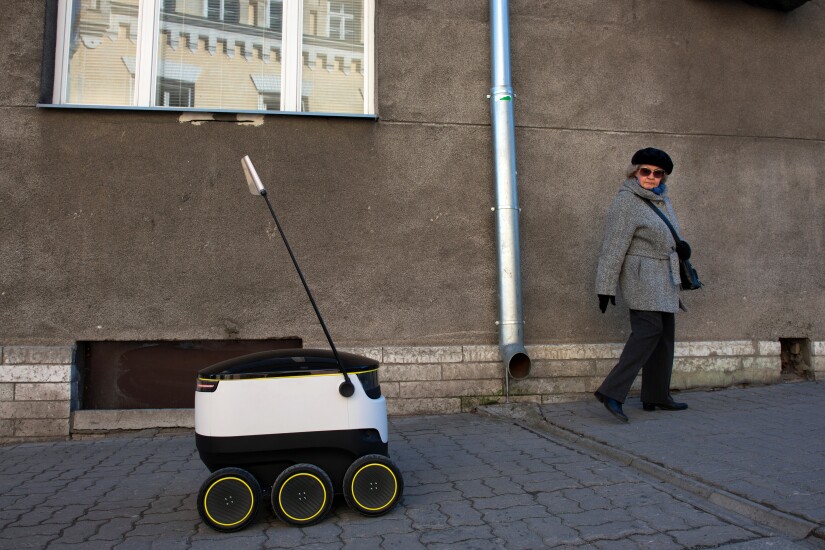

Pepper
It already has deals in place such as a 2016 agreement with Mastercard and Pizza Hut to test the robot's ability to take food orders and payments.
Though it is clearly a robot, Pepper is designed to be "perceptive" of the humans around it, using cameras, microphones, vocal recognition and analytics to create an experience that's organic and responds to emotion.
Pepper's motion sensors allow it to move around a crowded room without bumping into people or things. Its "humanlike" voice and its perception of humans are designed to bridge the conversational gap that is typical between humans and machines.
Pepper has also been deployed in Softbank mobile stores as a service device and in some Japanese homes.

Amazon Prime Air
Amazon's unmanned drones can carry packages of up to five pounds to a destination up to 30 minutes away, without human intervention. The company has already begun testing this system with a private client in the U.K., where it will evaluate the safety and reliability of the system.
Concept videos show that customers will have to select Prime Air as a delivery option for eligible items. After that point, an Amazon employee loads the item into a box that gets sent via conveyer belt to a waiting drone. When the drone lands at its destination, it drops off the box and immediately flies off.
Amazon has tested several form factors for its drones, including models that hold the package internally to protect them from the elements — and gravity.

Starship Technologies
The company will soon begin a 12-month pilot of its robotic food delivery service in Concord, Calif., with up to a dozen small six-wheeled robots covering a four-mile area,
Residents can order food online or through a mobile app, and the meal remains locked inside until the robot arrives at its destination, at which point the customer can unlock the delivery droid by clicking a link in a text message, according to the article.
But the machines still need a little human help; during the test, a person will accompany the robot to help it navigate obstacles and cross streets. The 25-pound robots also have a top speed of just four miles per hour.

Chatbots for consumers
Amex’s chatbot debuted at the 2016 Cannes Lion International Festival of Creativity, featuring transaction notifications and benefit reminders. Every time a purchase is made, the chatbot sends a notification outlining the transaction.
Version two of the chatbot allows users to add a card when linking an Amex account to Facebook Messenger.
Payment card credentials are then stored with Facebook so users can transact on the social network to pay Facebook directly for digital games or goods, buy items from Facebook's Marketplace or advertisers, or donate to charity.

Better than human?
“Our customers often do not realize that they are talking to a bot and not a person as the interactions are so natural,” said Sandeep Lal, group head of digital bank at DBS.
The bot, called Kai, can do more for a customer than a live agent in a customer care center can, according to Lal.
“If you ask an agent, ‘How much did I spend on groceries last month?’ they might take some time to pull up that data,” he said. Kai can answer instantly. The virtual assistant could also handle complicated service questions faster and more accurately than a human, he said.

Robotic stores
Perhaps the most extreme example is Moby, which deployed a self-driving supermarket in Shanghai.
The futuristic-themed, solar-powered store is "staffed" by a holographic greeter and recognizes customers via a mobile app, according to
Though the concept is being tested in Shanghai, the ultimate purpose of the Moby store is to maintain a retail presence in regions that don't have a strong enough economy to support a permanent grocery store, according to the article. And in its current form, the "self-driving" store still needs a human driver to return it to a warehouse.
A more stationary model might be Amazon Go, a concept store that doesn't have holographic greeters but does have sensors throughout the store that can detect what people are picking up and which accounts to charge for the payment.

The disembodied voice
Amazon's Alexa may be the most famous implementation of voice-controlled ordering and payments, but the space is quickly getting crowded with similar products from Google and Apple coming to market. Amazon encourages the use of its Alexa smart assistant by offering voice-only deals that treat the smart assistant as a specialized channel for sales.





